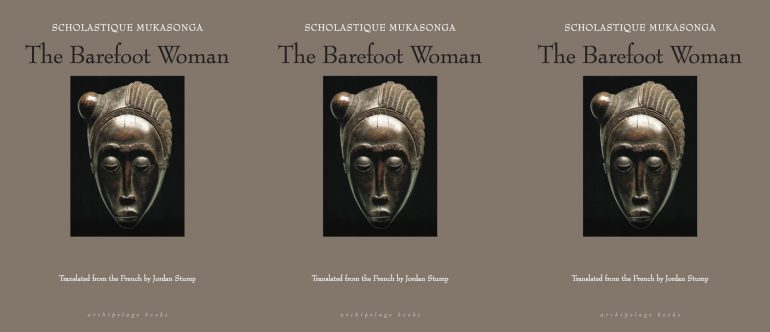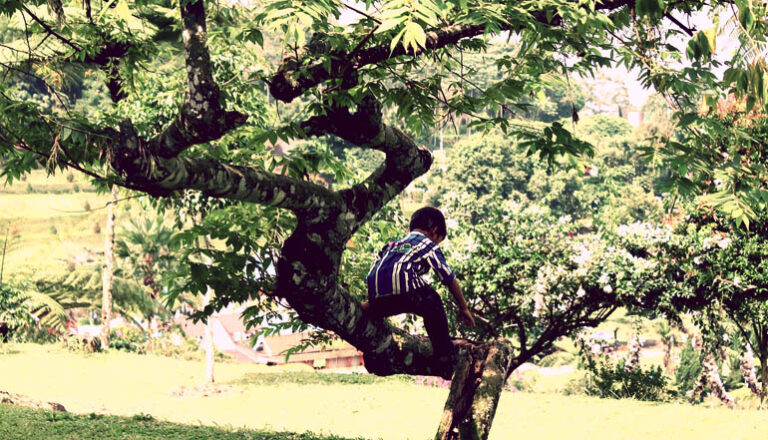Memory and Documentation in The Barefoot Woman and “Khol Do”

Women account for some of the greatest causalities of genocide and sectarian conflict, which spawn immense and unimaginable sexual violence intended to subjugate and threaten. But too often, survivors and victims are not visible in mainstream narratives surrounding such violence, and writers do not fully explore the impacts of normalized mass rape on a community and an individual. Such narratives also preserve the anonymity of the faceless and nameless women and their families. The Barefoot Woman by Scholastique Mukasonga, however, counters this dehumanization, recreating the destroyed world of her mother, Stefania, and the other Tutsi women like her who have been lost to the Rwandan genocide of 1994. “Khol Do,” Saadat Hasan Manto’s famous short story that depicts a young girl rendered nearly lifeless by multiple rapes in the wake of the Partition of India in 1947, also illustrates how fiction is instrumental in preserving the memory of communal bloodshed and the cost of conflict for women.
In The Barefoot Woman, a tender and dignified memoir published in French in 2008 and in English (translated by Jordan Stump) in 2018, Scholastique Mukasonga recounts how her mother, Stefania, tried to protect her Tutsi family in Rwanda in the 1960s and ’70s, during the time leading up to the genocide of 1994. The genocide, in which the Hutu majority turned upon their Tutsi neighbors and killed around 800,000 people, claimed thirty-seven members of Mukasonga’s family, Stefania among them. Mukasonga survived because she had escaped to Burundi with a brother years ago; they were the only two survivors in their family. There was, during this time, savage sexual violence—thousands of Tutsi women were raped, and several thousands of them were infected with HIV/AIDS and bore children.
With its respectful expositions on cooking, farming, and beauty, the book draws the reader into the different facets of Stefania’s daily life, pushing back against dehumanizing narratives and restoring Stefania to her warm and authoritative position. The memoir, too, highlights the extinction of an entire way of living, reminding the reader of the costs of the Rwandan genocide. Early on in The Barefoot Woman, Stefania tells her daughters that when she died, it would be their responsibility to cover her. “No one must see me,” she would say. “A mother’s dead body is not to be seen. You’ll have to cover me, my daughters, that’s your job and no one else’s.” But no one covered her with her pagne. By writing this book, with its loving recollections of her mother’s destroyed world, Mukasonga intends to weave a shroud for Stefania’s missing body.
The memoir opens with Tutsi deportees from the hills trying to re-establish some semblance of orderly life in the Bugesera, a district south of Kigali composed of expanses of barren land from which the exiles coax sweet potatoes, beans, bananas, taro, and sorghum, the true Rwandan crop that Stefania hoes the ground to plant. A young Mukasonga imitates her mother’s movements with her little hoe. As they work together, Stefania tells her daughter about her memories of Rwanda and the other secrets a mother shares with only her daughters—secrets that the author ruefully confesses to forgetting. The Barefoot Woman excavates such intimate, everyday moments, infused with a great poignancy and sense of loss, from genocide’s unyielding silence.
Women are the focus of the many such moments that shape the memoir, which is broken into fragments that focus on topics such as beauty and marriage, stories, and bread. The lurking soldiers from the Gako camp are, however, always nearby. Mukasonga recounts how Stefania was obsessed with trying to protect her children. She left clumps of hay on the field for them to hide under; she went off into the bushes alone to look for trails that might lead to the border to Burundi; she orchestrated rehearsals for her children so that they knew what to do when the soldiers arrived. In unadorned yet gentle prose, Mukasonga, however, highlights the futility of these endeavors—how such precautions were just for the children’s peace of mind. Such ruses did not fool the soldiers, who flushed them out with kicks, calling them “cockroaches,” the epithet used to dehumanize the Tutsi.
In this harsh, unforgiving environment, Stefania draws on the world they had been exiled from for strength. Such moments evoke stolen pasts to reclaim identity—while this memoir re-builds Stefania’s world, she re-creates the one she had known before exile. Take, for example, the family’s living arrangements: Stefania’s husband lives in the Tripolo house that the exiles had been instructed to build; she, however, decides that the house, with its straight walls and unforgiving corners is not for her, and decides to build an inzu, a traditional curved Rwandan dwelling, behind the Tripolo house. It is here that she re-establishes some of the old practices that they had been forced to give up, such as growing medicinal plants. Growing the plants kindles images of old Rwanda, in the hills, which Stefania misses.
The inzu also becomes a socializing venue for the other women of Nyamata, the capital of Bugesera. They gather at Stefania’s inzu to collectively partake in old Tutsi customs—Sundays are devoted to delousing sessions and discussions on matchmaking. The women share pipes as they laugh and chat, another lost custom. In her mind’s eye, Mukasonga sees Stefania perched on her termite mound; the good and bad qualities of each potential bride are listed for the gathered women, which elicits much laughter. Mukasonga paints a dynamic picture of the women of Bugesera and retrieves their individual memories from a collective silence. By crafting vignettes on the harvest, education, beauty, and marriage—women’s affairs—Mukasonga creates a testimonial of survival.
The memoir chronicles the story of Merciana, who was stripped naked in front of everyone in the village. The soldiers aimed their guns at her breasts, as if to warn Tutsi women “‘don’t bear any children.’” Tutsi women were not bearers of life—they were “bearers of death.” Mukasonga also narrates the story of Viviane, who was raped by the Party soldiers when she went to fetch water alone. The men of the village fetched her with a stretcher, the bloodstains on her pagne visible to all. Stefania and a few other women treated her, and when it was discovered that she was pregnant, they helped her bring her baby into the world. Mukasonga writes, “What does tradition have to say when your daughters are prey for the young men of the Party, who have been inculcated with the idea that raping a young Tutsi woman is a revolutionary act? Who will bear the crushing weight of the sorrow you struggle in vain to conceal?” In a personification of all the mothers who were persecuted in the genocide, Mukasonga writes that “Mother Courage is everywhere in the Rwanda of today.”
The horrifying accounts of sexual violence during the Rwandan genocide bring to mind the terrifying outbreak of killings, abductions, and rapes of the Partition of India in 1947. There are recurrent narratives of brutal sexual violence in the literatures surrounding and confronting histories of domination and violent communal conflict, in which societies link the “honor” of a woman with the “honor” of a society; we see this both in The Barefoot Woman and “Khol Do,” a story originally published in Urdu in the 1950s about the barbarity of the Partition.
After nearly three hundred years spent occupying India, when the British left, they partitioned the subcontinent into modern-day India (with a Hindu and Sikh majority) and Pakistan (with a Muslim majority). Millions of Hindus and Sikhs poured into India, while millions of Muslims headed to the West and East Pakistan (East Pakistan seceded and became Bangladesh in 1971). The Partition displaced nearly fifteen million people, and nearly two million people were killed. Communities attacked each other as widespread sectarian violence erupted across the subcontinent, with Punjab and Bengal facing the worst of the violence. Reading about Viviane and Merciana in The Barefoot Woman reminds me of “Khol Do” (Open It), in which a father is overjoyed to discover that his missing daughter, Sakina, is alive, only for the reader to learn that she has been raped many times.
“Khol Do” opens with Sirajuddin looking for Sakina in a refugee camp in Lahore, the capital of the Pakistani province Punjab on the India-Pakistan border. His wife has been killed—her stomach was ripped open—but he cannot remember what happened to his daughter. He sees a group of young men bringing in people left behind on the other side and describes his daughter to them. The men promise to look for her. A few days later, they find her running along the railroad tracks, but they don’t reunite Sirajuddin and Sakina. Some time later, Sakina’s body is brought into a building in the camp. The doctor instructs Sirajuddin to open the window, and on hearing the doctor say, “Open it,” Sakina’s lifeless hands start undoing the drawstring of her salwar. Sirajuddin is overjoyed to learn that his daughter is alive, but the doctor breaks into a cold sweat. The reader is left to imagine the extent of the horrors that the seemingly well-intentioned boys of her own community had enacted upon her. This story highlights the barbarity of which people are capable. As in Stefania’s world, Sirajuddin is powerless to protect his daughter from the very human hum of hatred.
With its extremely focused, snapshot-like view on Sakina and Sirajuddin, the piece evokes a lingering, haunting sense of disquiet, terror, and loss. It leaves only questions and does not hold any answers. The fact that her father is overjoyed to see that she is alive without recognizing her behavior heightens the desolation and horror engulfing the societal landscape of the time, where the fact that one was unmistakably alive was in itself a cause for celebration, regardless of one’s condition. The end of the story, focused on the image of the doctor breaking out into a cold sweat rather than an image of Sakina, is swift and abrupt, forcing the reader to confront the horrors that women have to survive.
In this manner, “Khol Do,” like The Barefoot Woman, illustrates the damage inflicted upon individuals, especially women, when they are targeted by the perpetrators of severe sectarian violence—and how memory at both an individual and collective level is essential in understanding the extent of such damage. The Barefoot Woman immortalizes the Rwandan genocide by beading together different facets of Tutsi life in exile in honest and quiet prose; while “Khol Do” is not as discursive, it clearly shows the reader intense flashes of violence that continue to reverberate and stun even today. Both texts give the victims and survivors a name and face and remind us that it is important to do so.


